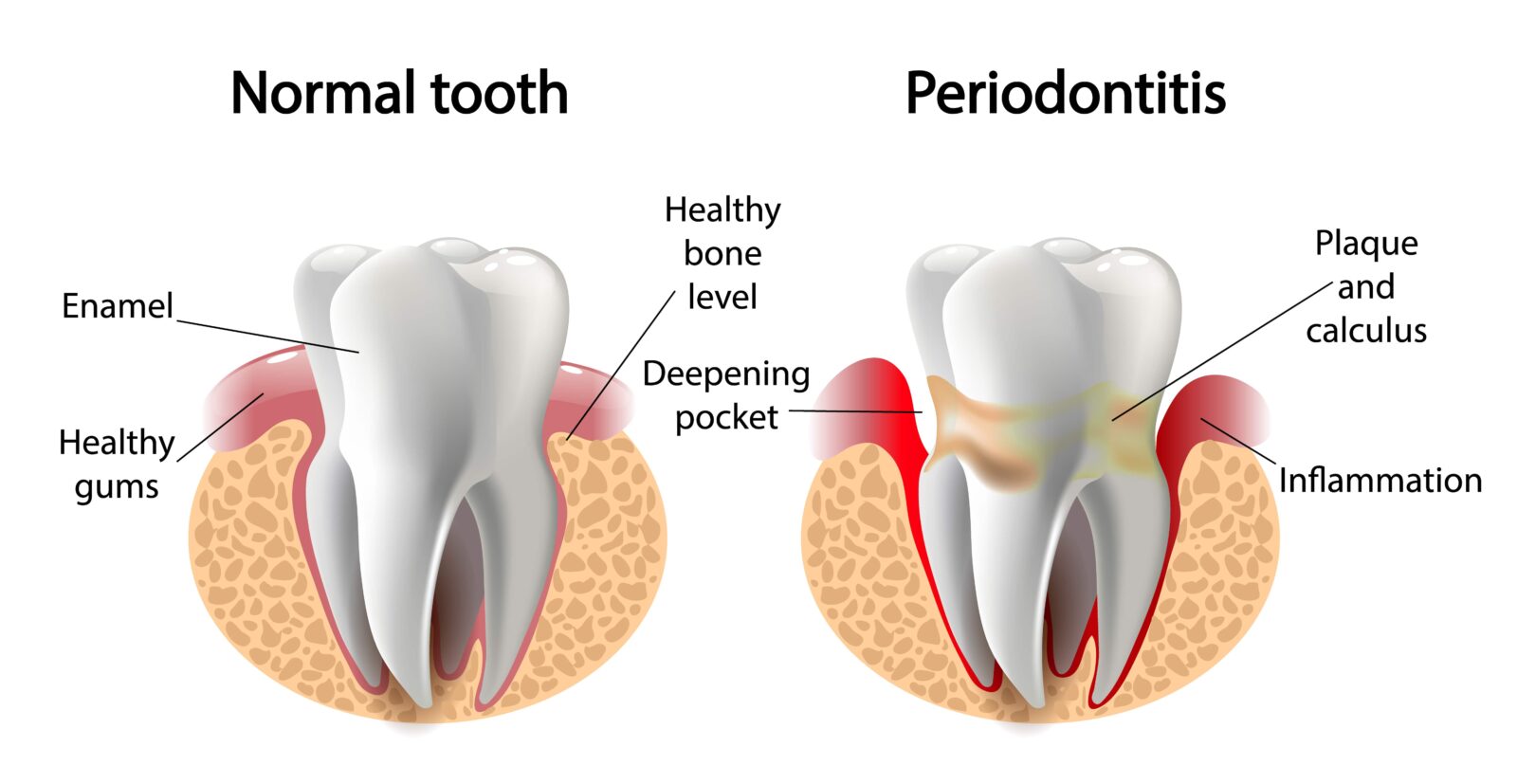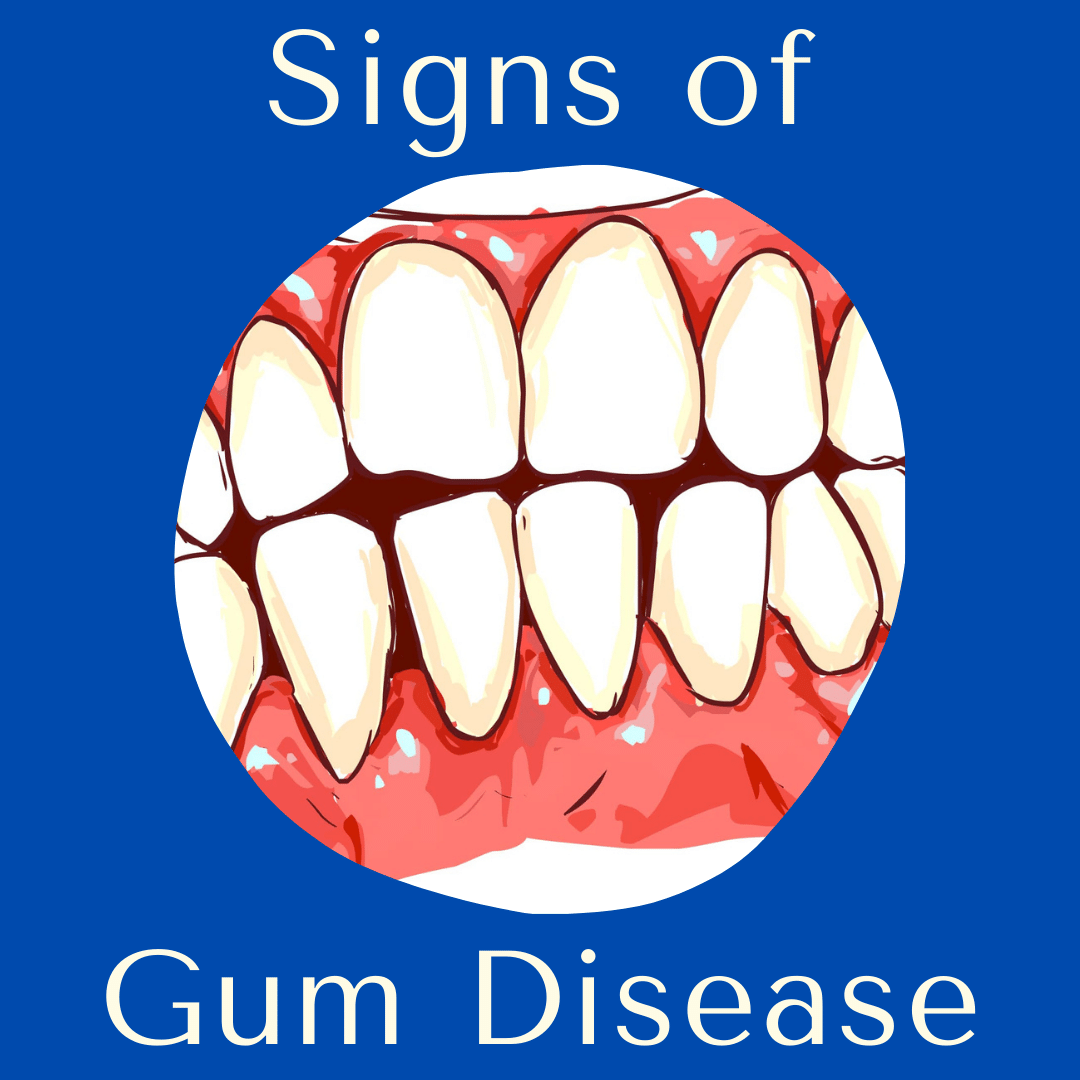Gum disease is one of the most common oral health conditions and it is estimated to affect almost half of Americans over the age of 30. The good news is that gum disease can be prevented altogether or easily treated when caught early. To help you maintain your gum health and catch potential symptoms early on, this blog post will cover what gum disease is, how it’s caused, and its most common symptoms.
Gum disease is caused by excess bacteria along the gum line that weakens and destroys the gum and other supportive tissues around the teeth. There are a number of factors that can increase your risk for gum disease, including poor oral hygiene, smoking, and diabetes. In addition, gum disease can be worsened by certain medications and medical conditions.
To catch gum disease at its early stages, it is important to know that gum disease can be mild or severe. Gingivitis is the mildest form of gum disease and it causes inflammation in your gums. Although not a serious condition if treated early on with regular dental visits to your dentist, gingivitis can progress to periodontitis if left untreated. Periodontitis is a more serious form of gum disease that affects the tissues and bones supporting your teeth. Untreated periodontitis can cause these supportive structures to deteriorate, which often results in tooth loss.
Now that we know a little more about what gum disease is and what causes it, let’s take a look at some of the most common symptoms to watch out for. Symptoms of gum disease can include:

Abnormal Gum Appearance
When your gums are healthy, they are a healthy pink color and fit snugly around your teeth. If your gums are red, swollen, or bleed easily when you brush your teeth, this indicates gum inflammation that could be a sign of gum disease.
Gum Recession
If you notice that your gums are receding (pulling away from the teeth), this is also an indicator of gum disease. As the gums recede, more and more of your tooth’s surface is exposed to bacteria and plaque, which can cause further damage to the teeth. Gum recession may not always be easy to spot because it can occur slowly over time. Because of this, your dentist will measure the depth of your gum pockets during normal dental exams to determine if your gums are receding. In some cases, gum recession can make your teeth appear longer or larger than before.
Bad Breath
Halitosis, or bad breath, can be a common symptom of gum disease. When bacteria and plaque accumulate on the teeth and gums, they can cause an unpleasant odor. Although bad breath is not always caused by gum disease, it’s important to visit your dentist if you’re experiencing this symptom regularly as it could be a sign of something more serious. Bad breath that continues despite regular brushing and flossing can be a sign of gum disease or other oral health problems.
Pain
In some cases, people with gum disease may experience pain in their teeth or jawbone. This pain can be a sign that the condition has progressed to a more serious form and you should contact your dentist as soon as possible. Pain can occur in the form of tender gums, trouble chewing or biting, or even tooth sensitivity. No matter what type of pain you are having, it is important to be seen by your dentist to determine the cause.
Although many people don’t realize this, tooth sensitivity can be a sign of gum disease. This is because gum recession exposes the tooth roots. Since the tooth roots do not have a protective coating of enamel, they are more susceptible to sensitivity from hot, cold, or sweet foods and beverages. However tooth sensitivity can also have other causes, so it is important to discuss this with your dentist.
In Conclusion
Gum disease is a serious condition that can affect the health of your teeth and gums if left untreated. It is important to be aware of the symptoms and see your dentist if you are experiencing any of them. By catching gum disease at its early stages, you can prevent it from progressing to a more serious form. We hope that this blog article has helped to provide some information about gum disease and its symptoms. If you have any questions, please do not hesitate to contact our office. Thank you for reading!






